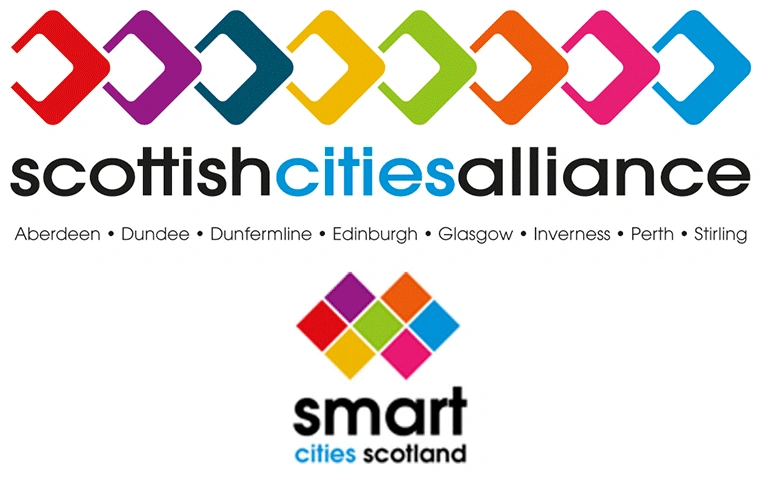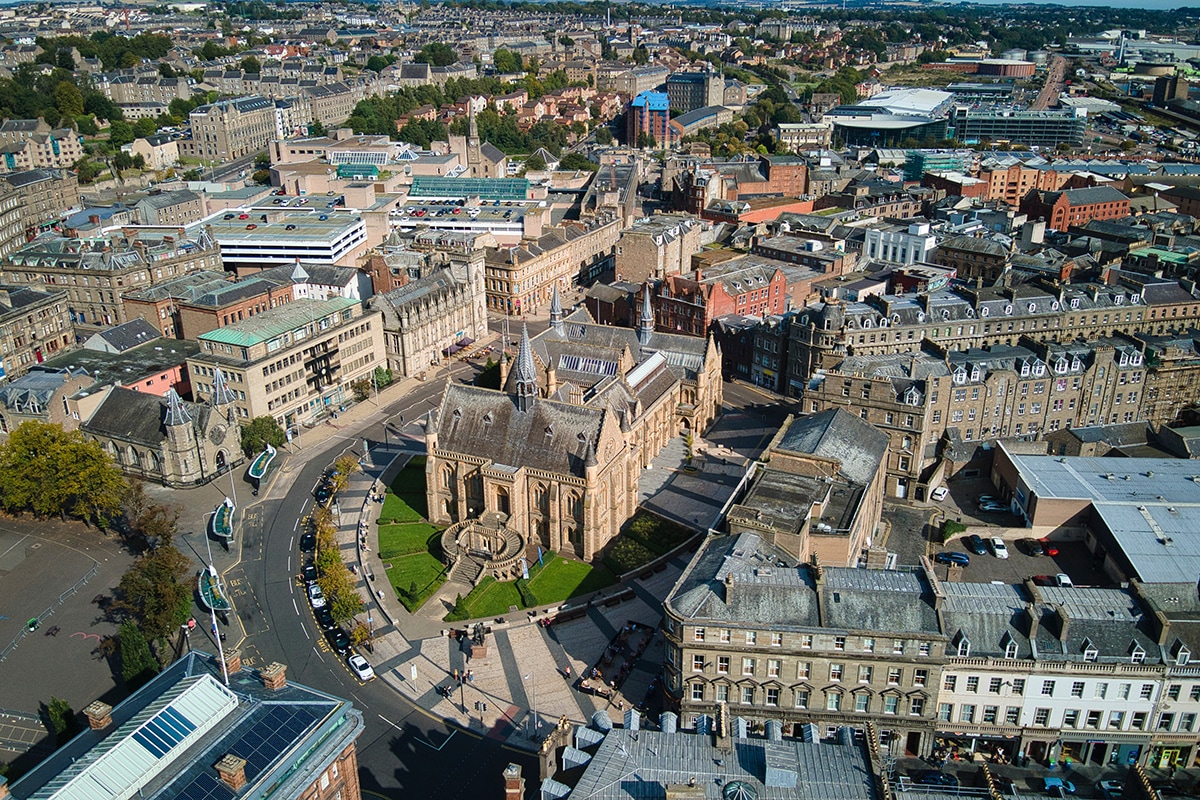Smart Cities Data Cluster
Challenge
This is the age of data. We collect data as never before: vehicle flows; building monitoring; air quality; footfall sensors; CCTV; etc. Managers need to make best use of this data to improve liveability: reduce congestion; save energy; improve air quality; improve shopping experiences and safety; ultimately improve citizens’ outcomes. Through data integration, data analytics, data science and open data local authorities and their partners can explore new solutions all towards finding these better outcomes.

They are moving up the data pyramid, going beyond raw data to improve understanding[1].
How we do this, is the challenge that “Scotland’s 8th City – the Smart City”, a Strategic Intervention within Scotland’s European Regional Development Fund (ERDF) Operational Programme 2014-20, is responding to.
Background
This ambitious programme involves all Scottish cities working together to expand their Smart City capabilities and deliver priorities through innovation, integration of service delivery, and improved community engagement. As noted by the Scottish Government, one of five core components of the Smart City is “Data”[2].
At the centre of the Programme is the Data Cluster, tasked with helping to maximise the re-use of data through analytics and open data, and to help ensure delivery against the main output indicators creating innovative services and opening up data sets for innovation. Data analytics allows users to understand and create new intelligence and use that new intelligence to improve outcomes. Open data makes data which was previously locked up in the public sector available as an asset for re-use enabling greater innovation, generating new business opportunities, allowing communities to tackle their problems in their way. If harnessed properly, the data can help Local Authorities improve services and save money.
The benefits of doing this at the seven cities level is that common uses of the data can be more quickly rolled out improving business opportunity and social benefit. Furthermore, combined, the cities offer a larger data asset to access than independently and can attract more interest and investment. Previous studies have shown a sizable return on investment to cities which have made their data available as Open Data.
Progress
The two year programme runs until December 2018. Since January 2017 the Data Cluster team, , working in collaboration across all of Scotland’s 7 cities, has initiated four Work Packages which comprise the cluster:
- Data standards;
- Data platforms;
- Data analytics; and
- Community and capacity building.
In fact, the Data Cluster acts as the glue for the entire “8th City Programme” as the only project that includes all of our Scottish cities.
| Data Cluster |
In May 2017 the data cluster procured an open data platform for Aberdeen, Dundee, Inverness and Perth (giving Stirling the option to follow suit if desired) allowing them to join Edinburgh and Glasgow with modern technology aimed at maximising the use of open data. These platforms should be live within weeks.
We have also initiated the analytics projects, identifying a number of common challenges for further investigation including school roll forecasting and fly-tipping.
Through our work we are moving towards standardising the publication of datasets across the cities as well as understanding and developing the open data community and capacity in Scotland.
What’s Next
The data cluster will continue with the publication of open data improving both the quality and quantity over time in line with guidance from Scotland’s Open Data Strategy[3] and the G8 Open Data Charter[4]. However it is in the analytics and in the community and capacity building areas, in making the best possible use of this data asset that we are most excited and aim to generate the largest impact from the data cluster.
With regard to community and capacity building we are seeking to truly understand all existing and potential stakeholders through stakeholder mapping and skills mapping and then to use this intelligence to maximise the value to Scotland. This will allow us to:
- Understand in greater detail where the private and public sector can support each other and maximise that relationship
- Concentrate efforts in open data publication where they offer the best value
- Formulate the most purposeful challenge areas and bring together all stakeholders to address these challenges through events such as challenge competitions or hackathons
- Create and stimulate local and national open data eco-systems throughout the programme
- Help to seed sustainable communities by making mutually beneficial introductions
This will all help to ultimately deliver against the potential outcomes of successful open data programmes to: inform service redesign; create new and innovative applications; create real and scalable business opportunities; and create tangible positive economic and social impacts.
The community and capacity building work will also help support the analytics being delivered within work package 3 where we are looking to use the increased supply of data and new data analytics technologies now available to potentially improve planning or decision making. Although some of this data in WP3 will be commercially or personally sensitive (and therefore not open data in its raw state) the ethos of collaboration across the cities and with partners to improve the outcomes will be embraced. Data will be published when it can be and so will the analytics steps which we employ. By sharing in this way we will encourage reuse and sharing of code and approaches.
Stay in touch!
So, please look out for the work of the open data cluster. Join and respond to our challenges and email info@scottishcities.org.uk if you see opportunity in anyway.
[1] DIKW Hierarchy – http://journals.sagepub.com/doi/abs/10.1177/0165551506070706
[2] https://scottishcities.wpengine.com/site/assets/files/1103/smart_cities_readiness_assessment_-_guidance_note.pdf
[3] http://www.gov.scot/Publications/2015/02/6614
[4] https://www.gov.uk/government/publications/open-data-charter/g8-open-data-charter-and-technical-annex






